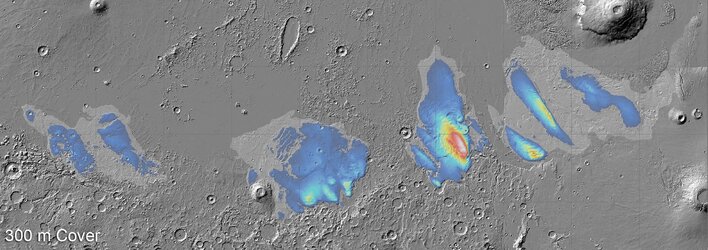Accept all cookies Accept only essential cookies See our Cookie Notice

About ESA
The European Space Agency (ESA) is Europe’s gateway to space. Its mission is to shape the development of Europe’s space capability and ensure that investment in space continues to deliver benefits to the citizens of Europe and the world.
Highlights
ESA - United space in Europe
This is ESA ESA facts Member States & Cooperating States Funding Director General Top management For Member State Delegations European vision European Space Policy ESA & EU Space Councils Responsibility & Sustainability Annual Report Calendar of meetings Corporate newsEstablishments & sites
ESA Headquarters ESA ESTEC ESA ESOC ESA ESRIN ESA EAC ESA ESAC Europe's Spaceport ESA ESEC ESA ECSAT Brussels Office Washington OfficeWorking with ESA
Business with ESA ESA Commercialisation Gateway Law at ESA Careers Cyber resilience at ESA IT at ESA Newsroom Partnerships Merchandising Licence Education Open Space Innovation Platform Integrity and Reporting Administrative Tribunal Health and SafetyMore about ESA
History ESA Historical Archives Exhibitions Publications Art & Culture ESA Merchandise Kids Diversity ESA Brand CentreLatest
Space in Member States
Find out more about space activities in our 23 Member States, and understand how ESA works together with their national agencies, institutions and organisations.
Science & Exploration
Exploring our Solar System and unlocking the secrets of the Universe
Go to topicAstronauts
Missions
Juice Euclid Webb Solar Orbiter BepiColombo Gaia ExoMars Cheops Exoplanet missions More missionsActivities
International Space Station Orion service module Gateway Concordia Caves & Pangaea BenefitsLatest
Space Safety
Protecting life and infrastructure on Earth and in orbit
Go to topicAsteroids
Asteroids and Planetary Defence Asteroid danger explained Flyeye telescope: asteroid detection Hera mission: asteroid deflection Near-Earth Object Coordination CentreSpace junk
About space debris Space debris by the numbers Space Environment Report In space refuelling, refurbishing and removingSafety from space
Clean Space ecodesign Zero Debris Technologies Space for Earth Supporting Sustainable DevelopmentLatest
Applications
Using space to benefit citizens and meet future challenges on Earth
Go to topicObserving the Earth
Observing the Earth Future EO Copernicus Meteorology Space for our climate Satellite missionsCommercialisation
ESA Commercialisation Gateway Open Space Innovation Platform Business Incubation ESA Space SolutionsLatest
Enabling & Support
Making space accessible and developing the technologies for the future
Go to topicBuilding missions
Space Engineering and Technology Test centre Laboratories Concurrent Design Facility Preparing for the future Shaping the Future Discovery and Preparation Advanced Concepts TeamSpace transportation
Space Transportation Ariane Vega Space Rider Future space transportation Boost! Europe's Spaceport Launches from Europe's Spaceport from 2012Latest

Map of suspected ice at Mars’s equator
Thank you for liking
You have already liked this page, you can only like it once!
Mars’s Medusae Fossae Formation (MFF) consists of a series of wind-sculpted deposits measuring hundreds of kilometres across and several kilometres high. Found at the boundary between Mars’s highlands and lowlands, the features are possibly the biggest single source of dust on Mars, and one of the most extensive deposits on the planet.
But this dry layer seems to hide a secret. A team of researchers used Mars Express radar data to peer below the surface. What they found was a top layer of dust that covers what seems to be a thick layer of deposits rich in water ice. This map shows the estimated amount of ice within the mounds that form the MFF, indicating that the ice-rich deposits are up to 3000 m thick.
The researchers estimate that the layer of dry material (likely dust or volcanic ash) covering the ice is 300–600 m thick. This map shows the ice thickness if we assume that the dust is 300 m thick. In this case, the total volume of water ice contained within the MFF deposits would be 400 000 km3, or if it melted, enough to cover Mars in an ocean of water 2.7 m deep.
If the dust layer is instead 600 m thick, the water ice layer would be thinner, and the total volume of water ice contained within the MFF deposits would be 220 000 km3, or if it melted, enough to cover Mars in an ocean of water 1.5 m deep.
[Image description: Grey planetary surface with coloured blobs. The blobs are blue around the outside, then go to green, yellow, orange, red then white towards the centre. A scale at the bottom reads 'Potential Ice Thickness' and runs from 0 m (dark blue) to 3000 m (red-white)]
-
CREDIT
Planetary Science Institute/Smithsonian Institution -
LICENCE
ESA Standard Licence

Map of suspected ice at Mars’s equator

Possible water ice at Mars’s equator

Mars Express radar data indicating heaps of water ic…

Eumenides Dorsum on Mars















 Germany
Germany
 Austria
Austria
 Belgium
Belgium
 Denmark
Denmark
 Spain
Spain
 Estonia
Estonia
 Finland
Finland
 France
France
 Greece
Greece
 Hungary
Hungary
 Ireland
Ireland
 Italy
Italy
 Luxembourg
Luxembourg
 Norway
Norway
 The Netherlands
The Netherlands
 Poland
Poland
 Portugal
Portugal
 Czechia
Czechia
 Romania
Romania
 United Kingdom
United Kingdom
 Slovenia
Slovenia
 Sweden
Sweden
 Switzerland
Switzerland
























